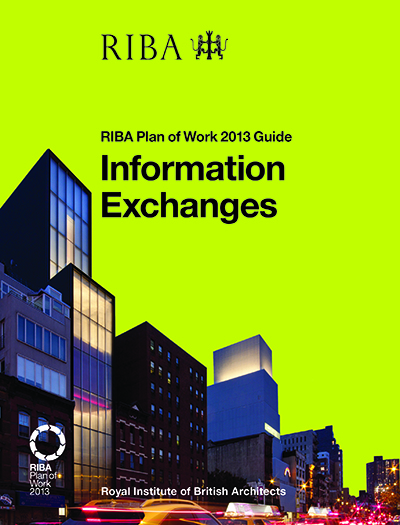Richard Fairhead, associate partner at bblur architecture and author of new publication Information Exchanges: RIBA Plan of Work Guide 2013, explains the key differences between the RIBA Plan of Work 2013 and the new Digital Plan of Work from NBS.
It’s not really a question of differences, or whether one plan of work should be used over the other, but more, how can each approach be used to improve the overall project process and its outcomes?
Despite having their own particular focus these two strategies were developed to complement each other and putting minor differences aside, they both successfully provide the basis for a collaborative approach to the design, construction and maintenance of a project.
The Digital Plan of Work (DPoW) outlines the information requirements for any constructed asset, new or existing.
The RIBA Plan of Work provides a framework for the project team to approach design, construction and operational processes in the UK and worldwide.
Also, the DPoW deals primarily with information created, developed and used within BIM models, while the RIBA Plan of work recognises that not all projects will be procured to that standard or moreover, developed using a BIM approach.
Developed by the BIM Task Group, the DPoW aims to provide clarity on how built asset data is defined, tested and successfully used by the supply chain and the public client to achieve BIM Level 2 on all publicly procured assets by 2016. Comprising seven numbered stages, it was developed to avoid confusion and inconsistencies within construction processes arising from:
- Numerous discipline-specific plans of work;
- Generic scopes of service;
- Overlapping tasks and duties;
- Emerging levels of BIM data and geometry.
The digital plan identified key strategic points for the client to define the maturity of building, infrastructure or civils project information; why it is required, what it is for and who will use/manage it, providing the foundation for its validation at each stage of the asset lifecycle.
This information maturity, or Level of Definition comprises: levels of model detail (LOD), relating to the graphical content; levels of model information (LOI), relating to the non-graphical content.
The RIBA Plan of Work 2013, developed during the same period, recognised the value of aligning work stages across the industry to ensure project teams can work collaboratively towards a common goal. This alignment enabled the RIBA plan to correspond directly with the DPoW’s key strategic points through the introduction of an “information exchanges” task bar and an optional “UK government information exchanges” bar. Both provide the client with an opportunity to outline the project’s information requirements according to the development strategy.
As mentioned above, the RIBA Plan provides a digital interface online where the team can define generic, practice and project-specific approaches as well as using the Plan of Work toolbox to develop project roles, design responsibilities and multidisciplinary schedules of services.
The principles of the DPoW have also been developed within an online tool allowing the project team to allocate project specific tasks, responsibilities and levels of maturity for project information.
In addition, there is a validation tool, currently in development, which will allow the information being exchanged to be checked for compliance against that originally defined in the DPoW. The data generated within each online tool is interchangeable and can be collaboratively used to define and develop the “who, what and why” for any type and size of project.
Despite defining different requirements for construction projects, the flexibility and accessibility of the DPoW and the RIBA Plan of Work 2013 has further aligned these two approaches, reinforcing the importance of correctly developed and managed information, its impact on collaboration within the industry and the realisation of greater quality and better outcomes for clients and their projects.
Information Exchanges: RIBA Plan of Work Guide 2013
by RIBA Publishing is a new book that provides detailed guidance on managing information exchanges and explains the essential activities and considerations required at each stage of the RIBA Plan of Work.
Comments
Comments are closed.













Cool
I have been waiting for this for the past 6 years, about time RIBA!! If only we could all take 6 years to do things. My wife would go mental if it took me 6 years to pick up my toe nail clippings.